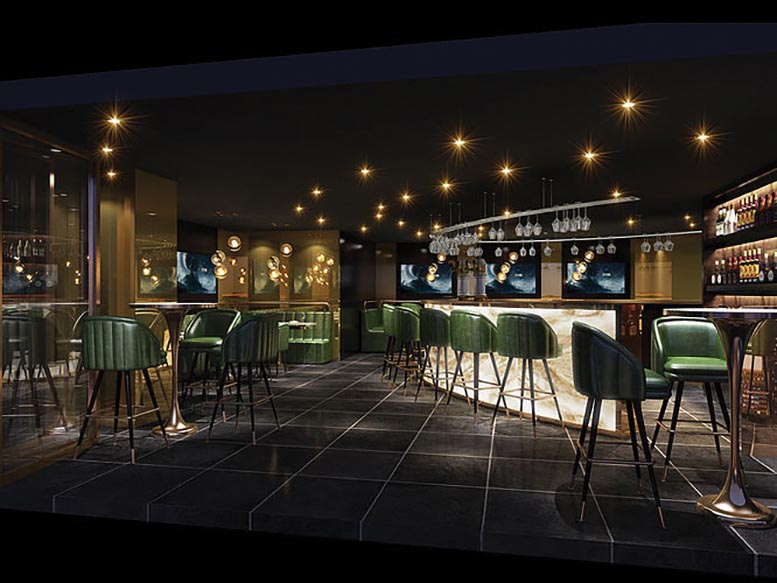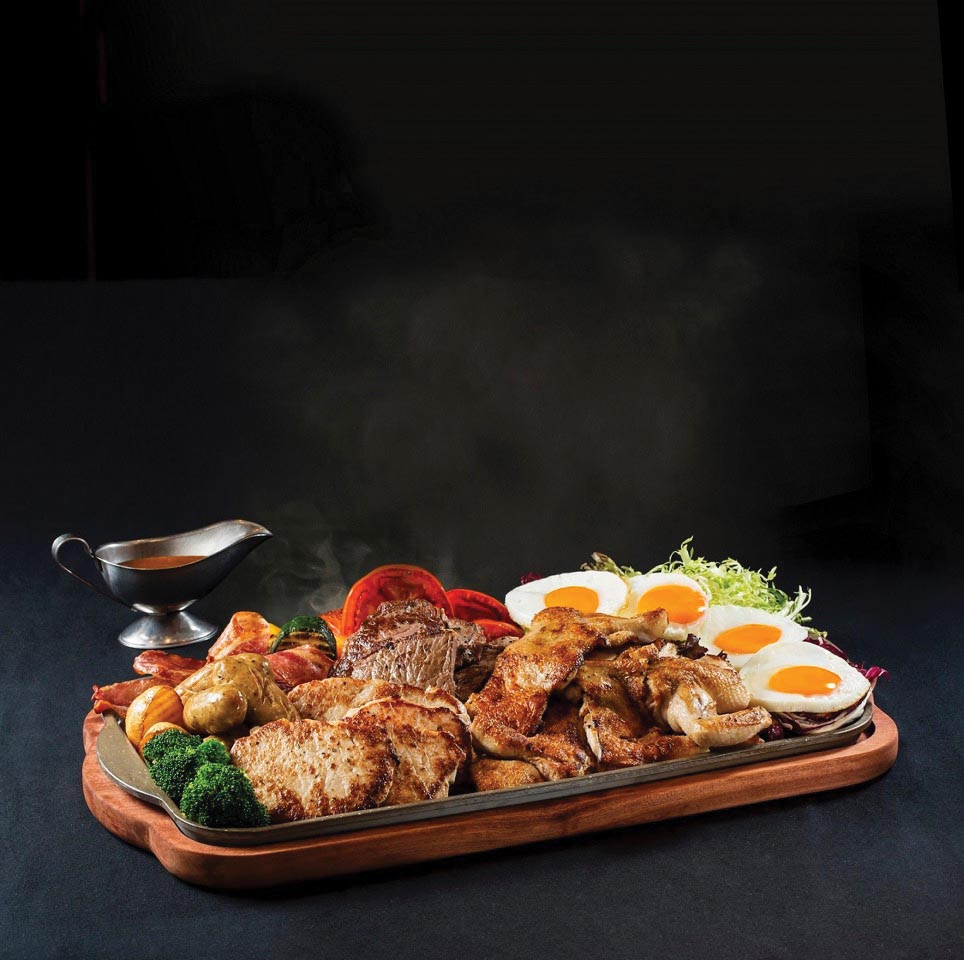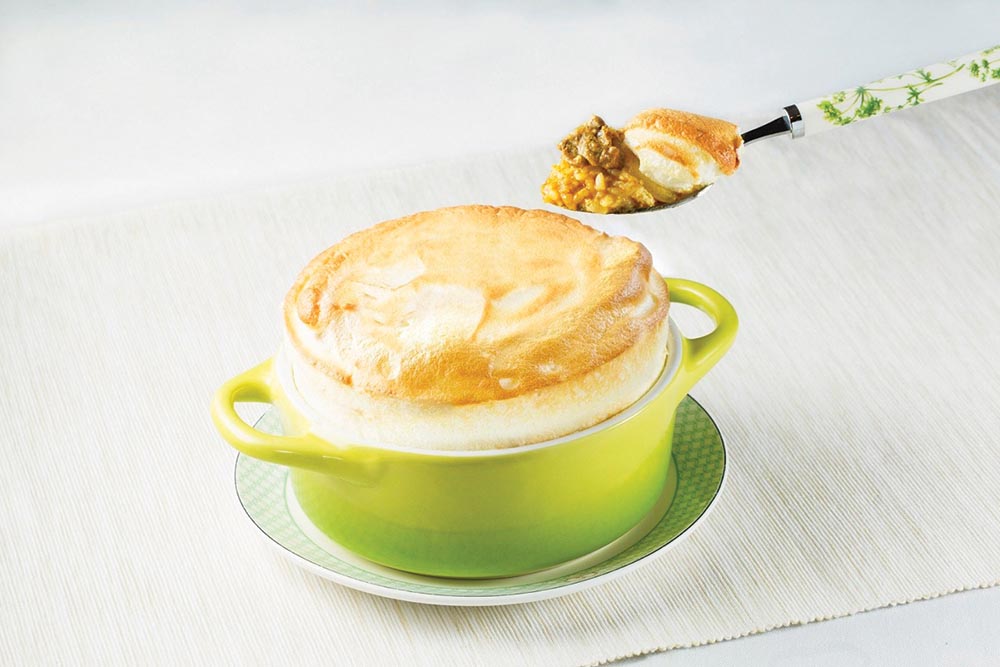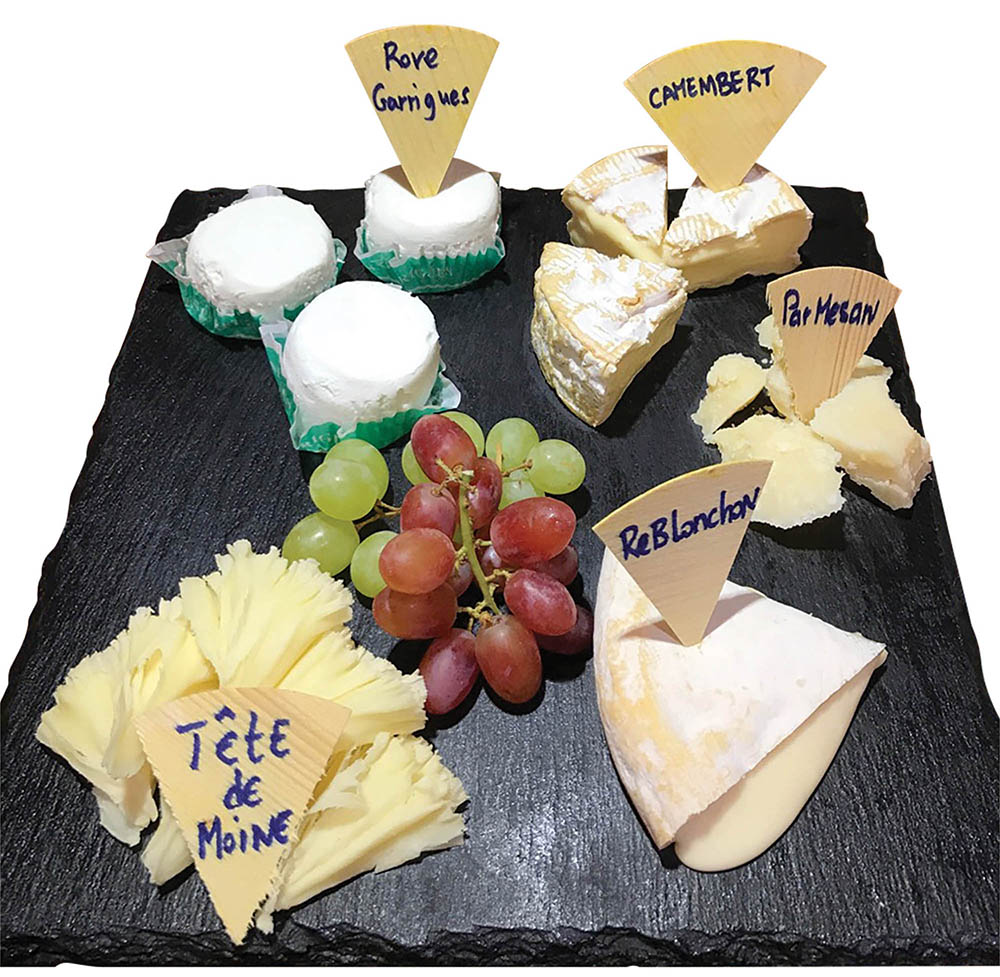








Food & Drink

Nostalgic Noms: Loi Lo
Hong Kong’s famed retro “soy sauce Western cuisine” gets a modern makeover
Nostalgic Noms: Loi Lo
Hong Kong’s famed retro “soy sauce Western cuisine” gets a modern makeover
Lifestyle > Food & Drink |
Nostalgic Noms: Loi Lo
September 29, 2017 / by China Daily Lifestyle Premium
For many Hongkongers, there’s a nostalgic attachment when it comes to classic cha chaan teng dishes – the so-called “Swiss-style” sweetened soy sauce chicken wings, soy sauce-marinated steaks with rice and so much more. This unique form of fusion cooking was named “soy sauce Western cuisine” in 1960s Hong Kong and became known for making its Western dishes relevant to local palates at an affordable price.
Loyal Dining is a local restaurant centred on revisiting this nostalgic theme with a modern and sometimes luxurious twist, such as mixing barbecue pork with foie gras and featuring speciality cocktails on the menu. The Cantonese name for Loyal Dining, which reads “Loi Lo”, stems from a local phrase referring to popular imported goods from the West during the colonial era in the 1960s and ’70s.
This July, the six-year-old restaurant upped stakes and moved from bustling Central to Wan Chai. With its interiors a blend of Eastern and Western influences, the reopened two-storey space features a ground-floor lounge bar and a refurbished dining zone upstairs, with a definitive focus on the ambience. Come for a taste of the past – and the future. ![]()
Signature dishes
Soufflé with beef-rib curry rice (HK$148)
Deep-fried fish fingers in sweet corn sauce (HK$138)
Beef Wellington (HK$238)
Signature cocktails (all HK$105)
Loyal Iced Tea
Ovaltine Fizz
The Joy in Childhood
Loyal Dining
1/F, 5 Tonnochy Road, Wan Chai
+852 3125 3000
(loyaldining.com)

Say Cheese
Though many aren’t aware, there are some fantastic cheeses being aged in Hong Kong – we get two experts’ picks of what’s perfect to close out the summer
Say Cheese
Though many aren’t aware, there are some fantastic cheeses being aged in Hong Kong – we get two experts’ picks of what’s perfect to close out the summer
Lifestyle > Food & Drink |
Say Cheese
August 25, 2017 / by Louis-Marie Delmas
For several years, a number of French cheesemakers have been taking advantage of an efficient logistics network, exporting their raw milk products to meet the growing demand from restaurants and local consumers. Now, two of these fromagers-affineurs have taken the pioneering step of ripening their cheeses right here in Hong Kong. Jérémy Evrard (of the soon-to-open J’s Bar Bistro at the Royal Garden Hotel in Tsim Sha Tsui) and Thierry Rochas Dupérier (La Fromagerie in Central) select cheeses from small-scale European producers, bring them to the city and work their magic to turn them into matured masterpieces. Here, each man tells us what he would put on his ideal cheese platter for six people as summer winds down.
“My end-of-summer cheese platter would be like a tour of Europe, with cheeses ranging from the mildest to the strongest, from France and bordering cheesemaking countries. So there would be a hand-ladled raw milk camembert made by Gaslonde, one of the best cheesemakers in Normandy. Then there would be an artisanal raw milk Reblochon and a Rove des Garrigues, which is a fresh goat’s cheese that has a subtle thyme flavour, because the goats roam freely in the Provençal scrublands – it’s a favourite of mine. The famous Tête de Moine from Switzerland has a graphic aspect – the little flower shapes made by the “girolle” cheese-cutter will look beautiful on the platter. And to end this cheese-tasting journey through Europe, an Italian parmesan.”
—Thierry Rochas Dupérier
“As summer draws to an end, cheeses from the mountain pastures appeal to me the most. So I’d select a Brillât-Savarin, a Saint-Nectaire, a Comté, a Manigodine, a farm-produced Époisses and a slice of Fourme d’Ambert.”
—Jérémy Evrard
Images: Courtesy of Jérémy Evrard and Thierry Rochas Dupérier
Back to top

Valley Views
Simon Field, a Master of Wine and a buyer for Berry Bros & Rudd, discusses the Rhône Valley’s excellent 2015 vintage
Valley Views
Simon Field, a Master of Wine and a buyer for Berry Bros & Rudd, discusses the Rhône Valley’s excellent 2015 vintage
Lifestyle > Food & Drink |
Valley Views
June 30, 2017 / by Simon Field
above illustration: ©Berry Bros & Rudd
The wines of 2015 are a gold-plated triumph for both ends of the Rhône Valley. Early plaudits favoured the north and reds over whites, but the empirical evidence has underlined a rare uniformity of excellence. The reds perhaps prevailed, but only because of a climate that was almost too benevolent and which, on occasion, undermined acidity levels (in Viognier, for example). This vintage is a rare coincidence of quality and quantity.
Indeed, despite the relatively small berries and impressively thick skins, the superb finesse of the tannins really marks out this vintage. When asked to compare, vignerons in the south cited 2007 and 2010, while in the north, the most common comparisons were 2009 and 2010, with the consensus praising a style somewhere in the middle.
For the wines of the south, what one needs to avoid is too much of a good thing – too much sun and the danger of desiccated and sunburnt fruit, with alcohol levels creeping over 15 degrees and natural acidity that’s far too low. Such indulgence was avoided in 2015 as a result of two natural phenomena, both of which are often absent: first, the relatively wet spring, which topped up the water table; and, second, the unusually cool nights in the hottest part of the year, which delayed the process just enough to ensure physiological ripeness and sugar levels that weren’t excessive.
Read More
The heat was actually more pronounced earlier in the summer, with late June and early July being particularly scorching, contributing to an average mean temperature over the total growing season that was higher even than 2003. However, the mitigating factors rehearsed above were sufficiently significant to change the profile of the 2015 vintage, thus ensuring a lengthy and – to borrow a word much in currency with the vignerons when describing 2015 – “easy” season.
Easy is as easy does, and few things are, in reality, that simple in modern winemaking. The philosophy of so-called “minimal intervention” is very hard to achieve, after all – like drawing a perfect circle, free-hand. What looked to be a late year was soon revised towards an early picking date and then, with the relatively mild August, a “normal” harvest date. The early whites were picked in the middle of September and the late grapes, significantly mourvèdre, were all brought in by the end of the first week of October.
It’s a good-to-very-good vintage for whites across the piece and an excellent vintage for reds, with Côte-Rôtie and Hermitage particularly successful in the north. The southern vineyards were uniformly impressive, from the higher sites in Gigondas and Vinsobres through to the Crau plateau of Châteauneuf-du-Pape. Very few 2015s actually touched 15 degrees, even down here. Harmony and balance, a Socratic ideal – who could wish for more? ![]()
Back to top

The Joys of Rosé
Consulting oenologist and wine estate owner Michel Rolland crafts wines for more than 150 wineries in 14 countries. This includes France – where he works with Château l’Évangile, Château Figeac, Château La Conseillante and Château Pavie, to name a few – Italy, Spain, the United States (where his clients include Harlan Estate, Staglin and Screaming Eagle), South Africa, Argentina, Chile, India and China.
In addition to this, the 10 oenologists working in Rolland’s Pomerol laboratory analyse wines for more than 400 French wine estates. Just in time for summer, the Bordeaux-based “Flying Winemaker” shares the secrets of rosé.
The Joys of Rosé
Consulting oenologist and wine estate owner Michel Rolland crafts wines for more than 150 wineries in 14 countries. This includes France – where he works with Château l’Évangile, Château Figeac, Château La Conseillante and Château Pavie, to name a few – Italy, Spain, the United States (where his clients include Harlan Estate, Staglin and Screaming Eagle), South Africa, Argentina, Chile, India and China.
In addition to this, the 10 oenologists working in Rolland’s Pomerol laboratory analyse wines for more than 400 French wine estates. Just in time for summer, the Bordeaux-based “Flying Winemaker” shares the secrets of rosé.
Lifestyle > Food & Drink |
The Joys of Rosé
June 30, 2017 / by Pierre Godeau
Is rosé really the wine of summer?
Definitely. Rosés are wines for the sun-filled weekends and summer holidays. But people are gradually realising that they’re a pleasure to drink all year round.
Are there different types of rosé? Which varietals are most commonly used?
There are numerous types of rosé. In France, Provence is the best-known region, with varietals like cinsault, rolle, grenache and syrah. But there are also rosés made from pinot, cabernet sauvignon and other types of grapes.
Are there outstanding rosés in the same way that there are for reds and whites? What are the most famous rosé wines?
The quality of the Provence rosés has improved in the past few years, so they’ve acquired a reputation for excellence. In terms of name recognition, they dominate this market today.
Read More
Are rosés good wines for laying down in a cellar?
I don’t think rosés are made for that. Even so, everyone has come across a bottle that they had more or less forgotten about – and then greatly enjoyed drinking it.
How do you choose a rosé? How is a quality rosé recognised?
That’s a difficult question. Rosés aren’t ranked the way grands crus are. You buy a rosé; it’s not that expensive; you drink it and find out if you like it. If you don’t, then you buy a different one next time.
As an oenologist, do you often create rosé wines for the estates you work with?
Of course – rosés are in fashion, and besides that, I drink them myself.
What’s special about a Bordeaux rosé and how is it different from a clairet?
Rosés used to be the byproducts of red wine production in Bordeaux. Now rosés are crafted – and they have become very good. Clairet has existed for a long time in Bordeaux – the historical legacy of the English presence in Aquitaine. Clairet de Quinsac is an institution.
Do the Chinese produce rosé?
They have only just started to; I don’t have any good examples of Chinese rosé. But the varietals and the climate are genuinely favourable to producing rosé.
What foods does rosé go well with?
It goes well with almost all cuisines – that’s its great advantage.
What are your five favourite rosés?
I’m friends with all of the rosé producers – and I’d rather keep it that way! ![]()
Back to top

Shake it Up
“I’d like a cheeseburger, large fries and a Cosmo, please”
Shake it Up
“I’d like a cheeseburger, large fries and a Cosmo, please”
Lifestyle > Food & Drink |
Shake it Up
June 30, 2017 / by China Daily Lifestyle Premium
In the beloved TV series Sex and the City, protagonist Carrie Bradshaw famously paid tribute to her love of New York City and the Cosmopolitan cocktail. This summer, do her one better and try it yourself – it’s easy to look like a cocktail pro with our picks below.
Millefiori Jug, Karma Living
Pour juice or ice water from this pretty jug – it makes your fruit-based cocktails taste that much sweeter. Don’t believe it? Try making a piña colada, blue Hawaiian or mai tai.
Tropical Cocktail Kit, Sunnylife
Bring this colourful cocktail kit to your beach party and you’ll have everything you need to make some festive cocktails for six people: a shaker, six coasters, six watermelon-shaped ice cubes, six umbrellas, six straws, six stirrers and three drink recipes.
Floating Cooler, BigMouth Inc
Wonder how to keep your drinks close-by when you’re in the pool? This pink flamingo floating cooler helps to hold five drinks while you can also store more bottles and cans with ice in the central bucket.
The Shaker, Odeme
Experiment with your recipes using this glossy, gold-toned cocktail shaker – it’ll definitely make your drinks more stylish.
Cocktail of Choice: The Aviation
2 oz gin liqueur
½ oz Maraschino
½ oz lemon juice
¼ oz crème de violette

You Scream, I Scream…
Ice Cream!
Summer is a season many of us love to hate. It’s blisteringly hot and leaves us covered in sweat, but it also lets us indulge our pleasures for the chilly, sweet wonder that is ice cream. Check out some of the coolest spots in town
You Scream, I Scream…
Ice Cream!
Summer is a season many of us love to hate. It’s blisteringly hot and leaves us covered in sweat, but it also lets us indulge our pleasures for the chilly, sweet wonder that is ice cream. Check out some of the coolest spots in town
Lifestyle > Food & Drink |
You Scream, I Scream… Ice Cream!
June 30, 2017 / by Wang Yuke
Tezukuri no Mise
Particularly popular with youngsters and with queues a common sight, Tezukuri no Mise is known for its low prices and hefty serving sizes. The scoop is satisfyingly big at no more than HK$20, and the texture and taste are almost as good as premium ice creams, if you aren’t a hyper-critical connoisseur. The Japanese green tea, black sesame and chocolate chip flavours are recommended. You can also venture to try the tofu flavour, which could be an acquired taste for some – but we’d guess you’ll take to this soy milk-like treat.
Where to eat:
Numerous branches, including 11/F, Langham Place, 8 Argyle Street, Mong Kok
Passion by Gerard Dubois
You’ll be naturally drawn in by the cabinet display of colourful gelato at Passion by Gerard Dubois. The numerous flavour choices include some rare ones, such as Toblerone chocolate, Snickers candy bar and avocado. For those struggling to choose, the hazelnut and cookie flavours are the go-to options. The former has a strong fragrance of hazelnuts, which tastes natural and not artificial, while the latter will please you with its crunches of Oreo cookie crumbs generously embedded within.
Where to eat:
Numerous branches, including Shop G12, G/F, Lee Garden One, 33 Hysan Avenue, Causeway Bay
Read More
2/3 Dolci
The sea salt caramel ice cream offered by 2/3 Dolci may bring you to the shocking realisation that ice cream can be salty – and that the saltiness makes the ice cream even creamier. The caramel is rich and creamy, while the salty note running through the first bite to the finish intensifies the flavours, making the scoop that much more buttery. You’ll be reminded of lounging on the beach and breathing in the briny air.
Where to eat:
Shop 110, L1, Pacific Place, Admiralty
Yo Mama
If you dread putting extra fat on your waistline but still want a chilly fix, nothing’s better than yoghurt ice cream or frozen yoghurt. You can create your own yoghurt tub by choosing the size, flavours and toppings. Dozens of toppings are available, including fresh fruit slices; colourful embellishments such as gummy bears, fruity poppers and mochi; and crunchy treats such as nuts, candied cereals and chocolate M&Ms. The iced yoghurt is light and refreshing, quenching your thirst as well as your craving for dessert.
Where to eat:
Numerous branches, including Shop 1061, IFC Mall, Podium Level 1, Central

Summer Gastronomy
With two Michelin stars under his belt, Fabrice Vulin has just taken over as executive chef at top French restaurant The Tasting Room in Macau. He shares his recipe for a summer favourite
Summer Gastronomy
With two Michelin stars under his belt, Fabrice Vulin has just taken over as executive chef at top French restaurant The Tasting Room in Macau. He shares his recipe for a summer favourite
Lifestyle > Food & Drink |
Summer Cuisine
May 26, 2017 / by Louis-Marie Delmas
What summer ingredients do you use most?
Courgettes and tomatoes. You can deep-fry flowering courgettes in batter, bake, sauté, purée, chop them in a salad with mint – so many possible combinations. Likewise, there are so many things you can do with tomatoes: mousses, jellies, cold in a salad or cooked.
What’s today’s recipe?
Razor clams and cockles. You can serve this as a light first course or before dinner with drinks – it goes well with a glass of rosé, for example.
Read More
Ingredients
Razor clams and cockles on a leaf of soy-lime jelly
For the jelly:
20cl sweet soy sauce, 1 unwaxed lime, 2g agar-agar
For the shellfish topping:
1kg cockles, 1kg razor clams
For assembly and garnish:
1 unwaxed orange, 5cl olive oil, 150g coarse salt, a few sprigs of chervil and Thai basil, dill
Recipe
To make the jelly
Put the soy sauce, 5cl of water, the zest of the lime and half of its juice in a saucepan. Add the agar-agar. Bring to a boil over low heat, whisking. Pour the hot jelly onto a tray lined with cling film, spreading it to a thickness of about 2mm. Refrigerate.
To make the shellfish topping
Clean the cockles in several changes of cold water. Heat a pot (no oil) and arrange the cockles in it. Allow them to open naturally, stirring with a spoon. Spread out on a tray, remove the flesh and refrigerate. Do the same with the razor clams, keeping only the firm white flesh. Save 12 shells after cleaning them to remove all grit and sand.
To assemble
Cut the soy-lime jelly into strips the same size as the razor clam shells and line each shell with a strip of jelly. On each shell, delicately alternate pieces of razor clam meat and cockle meat, covering the shell completely. Grate the orange zest into the olive oil and garnish each assembled razor clam with a few drops. Decorate each one with the sprigs of chervil and basil, and add a generous grinding of pepper.
Dampen the coarse salt with a little water, add a bit of chopped dill and cut out four little round bases (diameter approximately the length of a razor clam shell). Place three of the assembled razor clams on each base. Chill and serve.
A tip from the chef:
Different types of shellfish can be added according to the season: littleneck clams, cherrystone clams, mussels or scallops.![]()
Back to top

New World Order
The Land Down Under isn’t necessarily associated with dainty wines – or character. Berry Bros & Rudd buyer Catriona Felstead, a Master of Wine, explains that’s there’s much more than oak-laden chardonnay and shiraz coming out of the country today, with a new generation of artisanal producers seeking to redefine Australian wine
New World Order
The Land Down Under isn’t necessarily associated with dainty wines – or character. Berry Bros & Rudd buyer Catriona Felstead, a Master of Wine, explains that’s there’s much more than oak-laden chardonnay and shiraz coming out of the country today, with a new generation of artisanal producers seeking to redefine Australian wine
Lifestyle > Food & Drink |
New World Order
above illustration: © : ©Berry Bros & Rudd
May 26, 2017 / by Catriona Felstead
There was a time when the prospect of attending a trade tasting of Australian wines mightn’t have gladdened the hearts of those in the wine trade. Despite dominating mass-market, high-volume sales in the UK for a number of years, it’s fair to say that Australia has struggled with the image of its premium wines. That’s not to say that there was anything wrong with them at all; rather, Australia has always been at the forefront of technically correct, scientifically advantaged wines. However, what was lacking was excitement.
Weighed down by memories of the heavily oaked chardonnays of the past, consumers’ thoughts weren’t of Australian white wines at the premium level. Sommeliers – the movers and shakers of many local wine trends – have seen such chardonnays veer completely to the other extreme: lean and austere wines, which are equally unpalatable. Red wines were often rich and thick in style, the joke being that one would need a knife and fork to tackle them. While this appealed to some, many in the wine trade have historically found these styles just a bit too predictable to shout about.
Fortunately, times are a-changing and Australia is, at last, becoming cool again. There have always been some maverick winemakers, but a new generation is coming through that’s focusing this natural flair into some exceptionally well-made yet truly interesting wines.
Read More
The range of styles is vast. This spans seriously delicate, elegant and complex (almost old-world) pinot noir to exciting blends with Italian, Spanish and Portugese varietals – including tempranillo (famously found in Rioja), touriga nacional (the backbone of high-quality port) and even rosé made from the obscure bastardo variety (apologies for any offence caused, but that is actually the name of the grape).
Such artisans have reinvigorated the Australian wine scene, driving interest from the top down. While most consumers will still associate this great country with chardonnay and shiraz for some time yet, there’s so much more to discover in Australian wine. Hopefully, such wines will gradually achieve wider recognition as Australia rightfully retakes its place as one of the most fascinating wine countries in the world.![]()
Back to top

Bubbling Over with Joy
Perrier-Jouët, owned by the Pernod Ricard group, produced 3.5 million bottles of champagne in 2016 – approximately 1% of global champagne production. For the launch of its non-vintage Cuvée Blanc de Blancs, the brand chose Hong Kong – it took cellar master Hervé Deschamps five years to develop a drink that matched the brand’s identity and the needs of the market
Bubbling Over with Joy
Perrier-Jouët, owned by the Pernod Ricard group, produced 3.5 million bottles of champagne in 2016 – approximately 1% of global champagne production. For the launch of its non-vintage Cuvée Blanc de Blancs, the brand chose Hong Kong – it took cellar master Hervé Deschamps five years to develop a drink that matched the brand’s identity and the needs of the market
Lifestyle > Food & Drink |
Bubbling Over with Joy
April 28, 2017 / by Pierre Godeau
Why did you wait so long to create this cuvée, and what distinguishes this blanc de blancs from its famous competitor Ruinart, made by the LVMH group, or from those made by the champagnes de vignerons?
It’s my responsibility to create something consistent with Perrier-Jouët without adversely affecting existing cuvées. As chardonnay is the rarest and most expensive champagne grape, I had to find new sources in small villages. I started working on this cuvée five years ago, not wanting to copy any other champagne house while remaining faithful to the Perrier-Jouët style as I have been doing for 34 years.
This cuvée is elegant and sophisticated, with a springtime floral aspect of delicate white blossoms like elderflower, acacia and honeysuckle that give off a subtle, lingering fragrance. It has fine bubbles from three years in the cellar and a pleasing, long finish that makes you want to pour another glass. There are some lovely blanc de blancs among the champagnes de vignerons, but the approach is very fragmented and the quantities are small.
What’s the right way to remove the cork from a champagne bottle and what’s the ideal temperature at which to serve it?
To open a bottle, tilt it slightly and grasp the cork while turning the bottle to release the cork. You have to let the gas gently push the cork out while maintaining control. Opened correctly, the champagne doesn’t make a big “pop” but just a little “fizz” as a small amount of gas escapes.
Then, you should taste it to make sure it’s at the right temperature – there’s nothing worse than serving champagne too cold. The ideal temperature is between 8 and 12 degrees. Preferably, you should fill the flute half-full when you open the bottle and then add more to cool the wine down again – don’t forget that champagne is a wine.
Can this blanc de blancs be drunk throughout an entire meal? What would the ideal pairing menu be?
This blanc de blancs can definitely be drunk throughout a seafood meal – oysters, scallops, shellfish such as crab, a steamed fish served with vegetables. With the creamy aspect and its orange and lemon blossom fragrances, I can also imagine a very light dessert flavoured with orange blossom water. ![]()
Back to top















